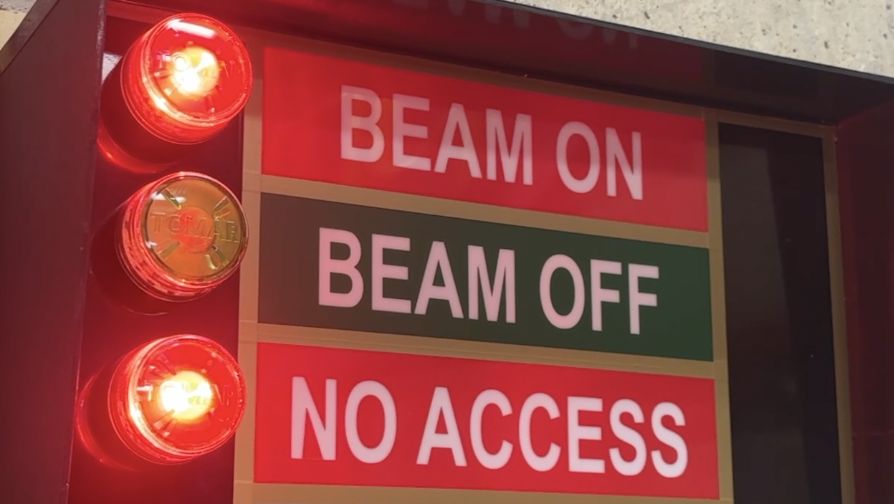COLLEGE STATION, Texas — The U.S. Department of Energy’s National Nuclear Security Administration (NNSA) has teamed up with Texas A&M to combat the devastating pest that can kill livestock, wildlife, pets and humans, while potentially creating massive damage to the country’s food supply.
The recent news that the New World screwworm had been found less than 75 miles from the U.S.-Mexico border has made a partnership even more critical, but not just for food or animal safety. The collaboration also revolves around national security.
The team-up is centered on one piece of technology: the electron beam.
Mostly used to sterilize food products, Dr. Suresh Pillai, the director of Texas A&M’s National Center for Electron Beam Research, explained the eBeam’s complicated process in simple terms.
“It’ll shred the DNA of the bacteria. And the doses are calibrated as such that the food isn’t affected, but the pathogens are inactivated,” Pillai said.
That concept has been used in other areas, and now after years of research and development, the NNSA is ready to use the technology to fight the New World screwworm.
“In this case with SIT (Sterile Insect Technique) the doses are so low calibrated in just creates sterility in male flies,” said Pillai. “The eBeam will treat the pupae and the insects that germinate out of the pupae will be sterile and when they mate with the female, there will be no viable offspring.”
Sterile Insect Technique, or SIT, is not new. It’s just that using the eBeam is safer than the alternative that’s been used and continues to be used for the practice. That alternative is an element called Cobalt-60.
“Cobalt-60 is radioactive material that emanates radiation out of it,” Pillai said.
The eBeam emits nothing, meaning the chances of it being used for nefarious purposes are nearly nonexistent.
“Electron beam is basically electricity, so there’s nothing to steal, there is no dirty bomb implications of electron beam. Once I switch it off, if anybody steals the equipment, it’s just the equipment,” Pillai said.
Cobalt-60 is currently being used at the SIT facility in Panama, but as of now, the current plan for the eBeam will keep it right here in Texas.
“The federal government has invested quite a bit of money into a building a facility in Texas. The idea is that this will be one of the technologies that they’re going to evaluate. Once the data pans out the way we think it’s going to pan out, then they’ll build an eBeam facility within the facility they’re building for the screwworm project.” Pillai said.
The U.S. Department of Agriculture is building the new screwworm facility at Moore Air Force Base in Edinburg, Texas. The project is expected to be completed in late 2025 or early 2026. Pillai said the research and development of using the eBeam on flies could take upwards of 12 months.

